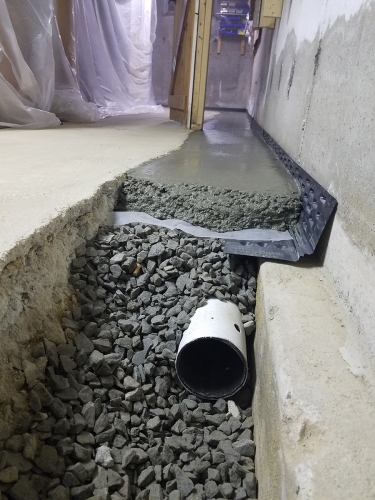Moisture Barrier Myths Debunked: What You Need to Know
Water-proofing is a crucial aspect of ensuring the integrity of every home or building. Despite its significance, many false beliefs surround this vital practice, resulting in misunderstandings about its need and effectiveness. As a homeowner or property manager, it's important to separate fact from myth to ensure that your investment is protected from water damage. Ignoring waterproofing can cause significant financial losses and compromise the safety and comfort of your living or working space.
In this article, we will dispel common waterproofing myths and provide you with the knowledge you need to make informed decisions for your property. From understanding why waterproofing is essential to exploring the various techniques available, we will examine everything you should know to keep your home safe and dry. Get ready to learn how proper waterproofing can save you a lot in repairs and extend the lifespan of your property.
Significance of Waterproof Solutions
Waterproofing is a critical aspect of preserving the soundness and longevity of all residential property or building. It protects structures from water damage, which can lead to costly repairs and a drop in real estate value. By adopting effective waterproofing measures, homeowners and builders can prevent water penetration that often causes mold growth, decay of wood, and foundation issues. This forward-thinking approach not only safeguards the actual structure but also contributes to a safer home atmosphere.
Ignoring waterproofing can cause significant financial consequences. Moisture issues is one of the top causes of insurance claims, and the costs associated with fixes can quickly add up. From repairing leaks to replacing impaired floors and wall structures, the expenses can be staggering. Putting resources in waterproofing solutions beforehand is a prudent choice to save thousands in future repairs, ultimately preserving the worth of the investment in your property.

Additionally, waterproofing is essential for energy efficiency in buildings. When water breaches the building, it can lead to higher moistness and temperature fluctuations, causing heating and cooling systems to struggle. Correctly waterproofed spaces ensure stable temperatures, which can lower energy bills and boost overall comfort. This aspect of waterproofing also boosts the building's functionality but also promotes sustainability efforts by minimizing energy consumption.
Frequent Waterproofing Myths
One prevalent misconception about waterproofing is that it is solely necessary for properties in flood-affected areas. Many homeowners believe that if their property is not a marked flood zone, they can skip waterproofing measures. However, https://aluneed.ca/ can occur in all locations due to intense rains, plumbing failures, or shifts in the topography. Ignoring waterproofing increases the risk of mold, building damage, and costly repairs, making it crucial for every home and building, irrespective of its site.
Another fallacy is that the waterproofing process is a single fix. Many homeowners think that once they have installed waterproofing materials, their home will be safe from water damage for good. This is far from the truth, as waterproofing systems can deteriorate over time due to wear and tear, exposure to severe conditions, and other environmental factors. Frequent inspections and maintenance are crucial to ensure the performance of waterproofing measures and to address any possible issues before they worsen.
Lastly, there’s a notion that DIY waterproofing is just as good as hiring a expert. While there are a variety of products available for homeowners to deal with waterproofing on their own initiative, the fact is that achieving the best results often requires in-depth knowledge and expertise. Skilled waterproofing contractors are equipped with specialized techniques and materials that can provide a greater level of protection and longevity, ultimately saving property owners time, effort, and money in the end.
Functional Moisture Control Solutions Methods
When it comes to efficient waterproofing, a combination of methods customized to your property’s individual needs is crucial. Interior waterproofing techniques, like putting in drainage systems and utilizing sealants on foundation walls, can successfully manage moisture that leaks in from the exterior. This is particularly important for basements, where rising humidity can cause mold and structural damage. Using sump pumps can also assist to divert water away from foundations in areas prone to flooding.
Outdoor waterproofing, on the flip side, focuses on preventing water from entering your building at all. This could involve grading your landscape to provide proper drainage, putting down waterproof membranes on foundational walls, and ensuring that gutters and downspouts are properly directing rainwater away from your home. These proactive measures are crucial in shielding your property from water damage and preserving its structural integrity.
For outdoor spaces, evaluate waterproofing your deck or patio with top-notch coatings that can withstand moisture. Investing in waterproofing solutions for balconies, terraces, and even swimming pools aids to prevent costly repairs in the future. Picking the right products for these areas, alongside appropriate installation, maximizes their lifespan and functionality, guaranteeing that your investments remain protected from the elements.